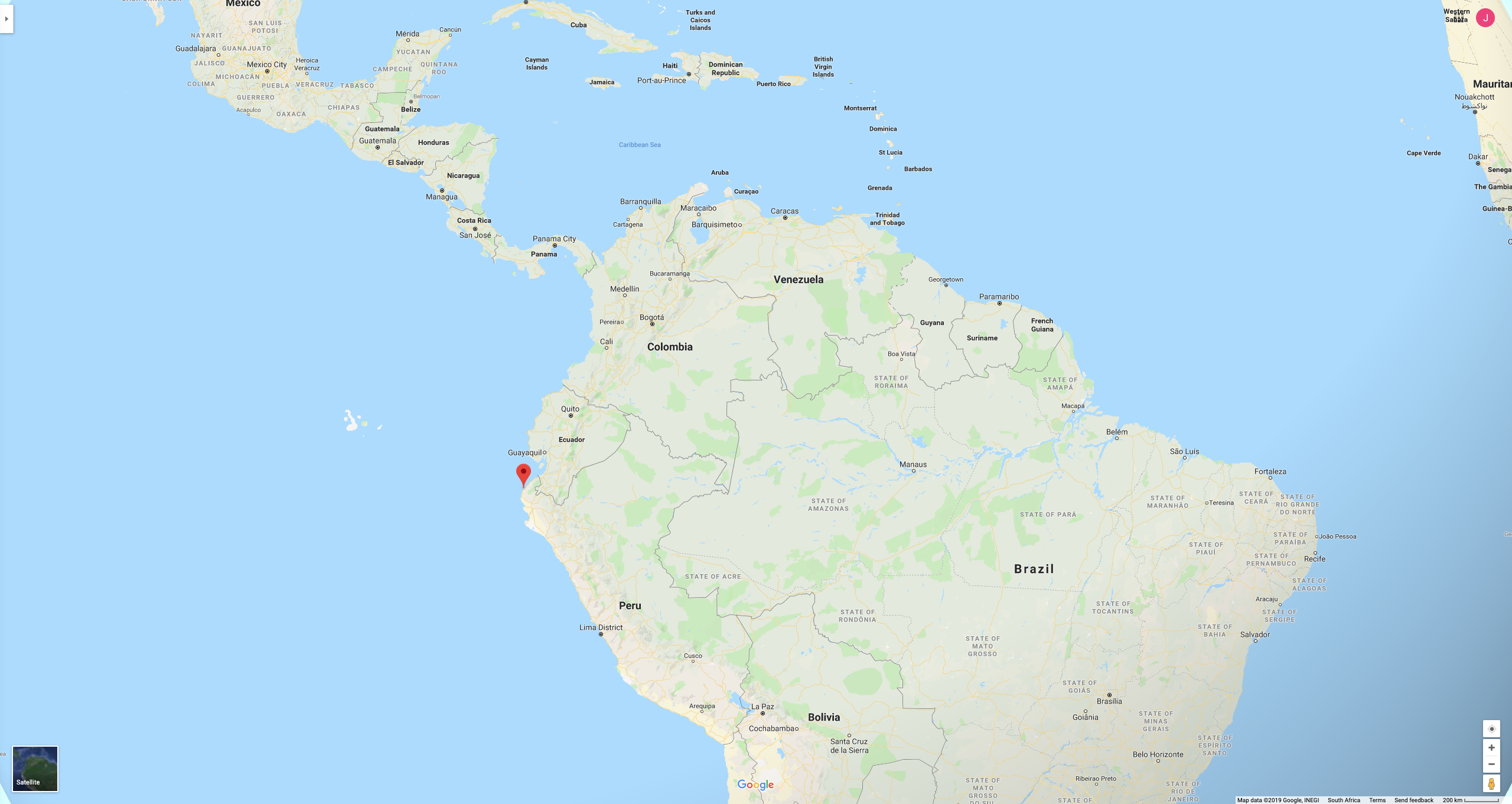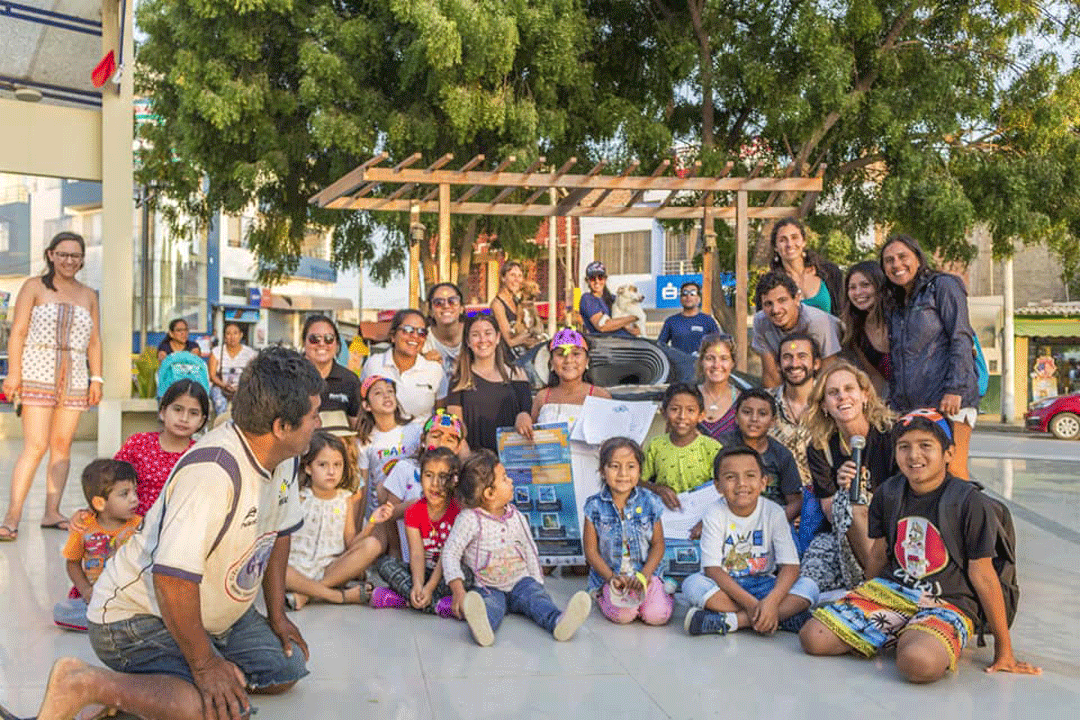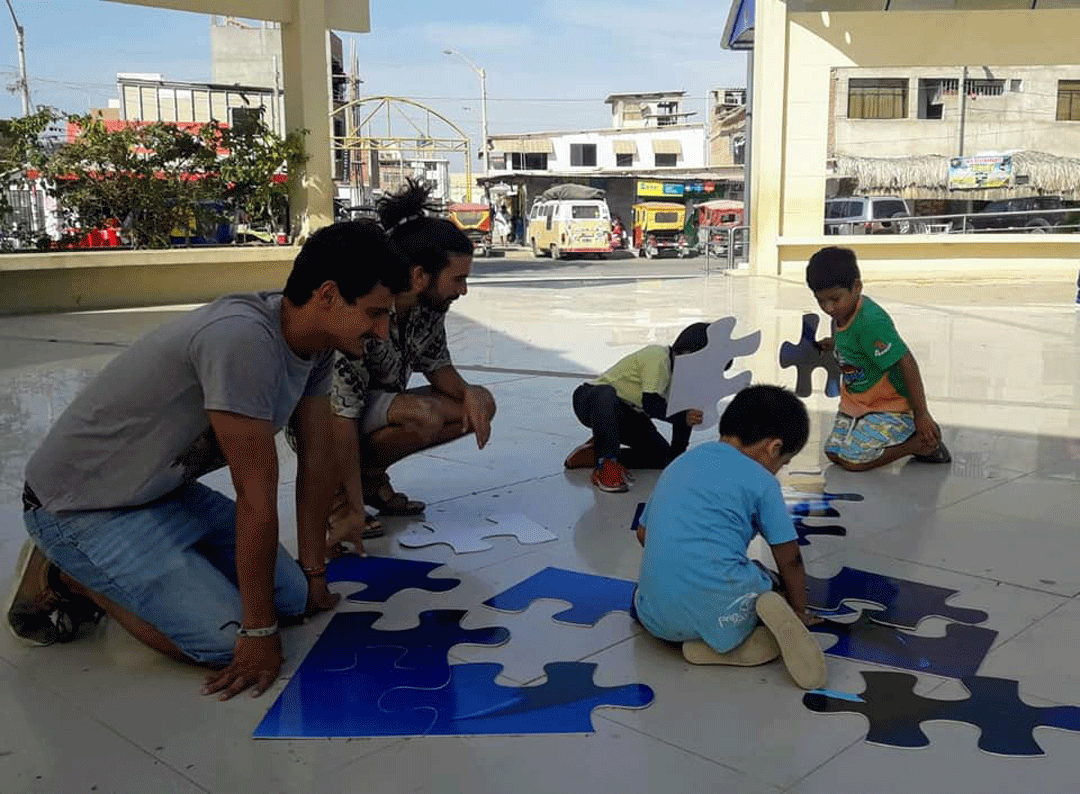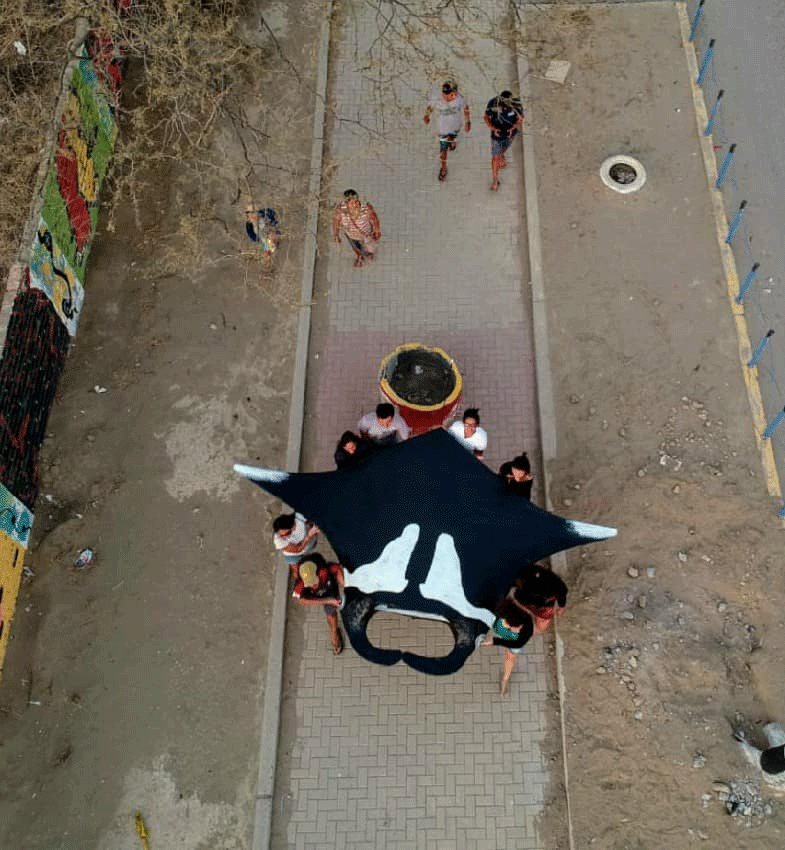Manta Festival in Los Organos
Stefany Rojas, Project Leader for the Peru Mobulid Project, tells us about her involvement in the recent Manta Festival held in Los Organos in Peru – a special event to celebrate the oceanic manta rays that visit their local waters.
Los Organos is a coastal community located in northern Peru. The main activity of this town is fishing, but in recent years tourism has also increased in the area. Each year more people come to enjoy its beaches, its landscapes, and its great biodiversity.

Image © Google Maps | Google
The oceanic manta ray is a flagship species for Los Organos and is an iconic animal found along the Peruvian coast. Previously this species was fished to be used in traditional dishes such as “Tortilla de raya”, but since 2015, manta rays are nationally protected. This is thanks to the collaboration of the government and local and international NGOs, including Manta Trust.

Photo © Manta Trust
This year a special festival for manta rays occurred in Los Organos. The festival aimed to raise awareness in the local community of manta rays and the threats they face. As part of the event, a life-size manta ray sculpture was created using plastic waste with the support of a local artist, Pascual Mimbela.

Photo © Manta Trust
The Manta Festival was held on the main square of Los Organos. Among the activities we had on this day were: making manta ray masks out of recycled material, puzzles, a commitment to the ocean poster and the, not to be missed, game of “put the parts to the manta”. Through these games, people could learn more about the principal characteristics of mantas. It was really a fun afternoon and full of learning. On the day of the festival, kids also participated in a drawing contest. The best drawings from the contest were awarded, and each of the participants could explain what their drawing was about and talk a little about the threats that exist to manta rays.

Photo © Manta Trust
All of the plastic and garbage was collected by the local school students during beach cleanups and separation of waste at home. This relied on the participation of teachers and parents at home. The importance of this activity was for people to realize, that plastics and garbage thrown in the ocean will affect marine animals. We need to change our habits to ensure a clean and safe environment for marine species and our future generations.

Photo © Manta Trust
The sculpture was transferred to the “Mundo Hippocampus Aquarium”. This aquarium is an obligatory stop of all the visitors of Los Organos, and the local schools visit them year after year as part of their school activities. Everything that could have been trash, today is art and is in view of everyone; plastic waste transformed into a beautiful manta ray sculpture whose mission is to continue educating each visitor one by one. In this place, everyone can learn about the main characteristics of this incredible species, in addition to knowing its biology, ecology and conservation efforts.

Photo © Manta Trust
